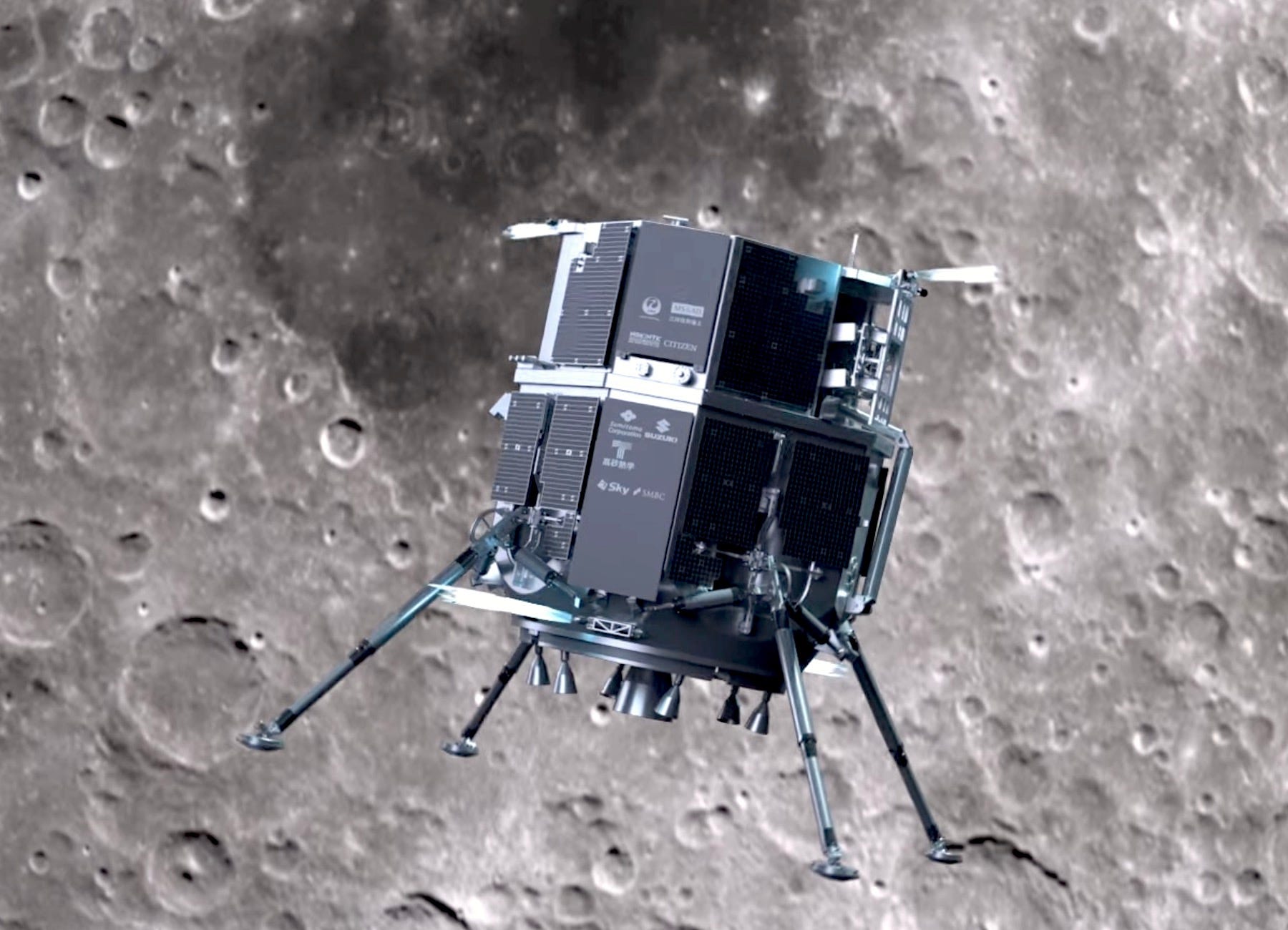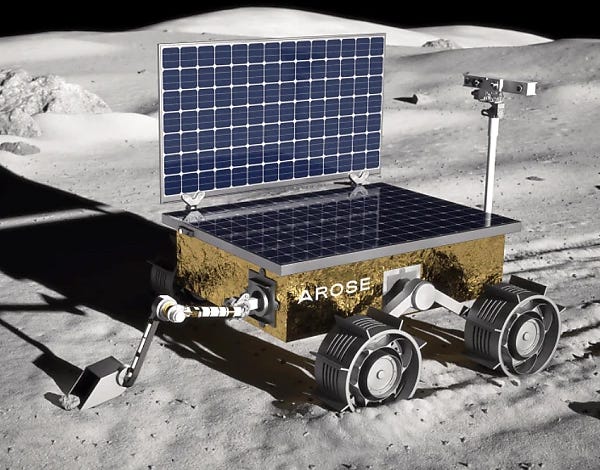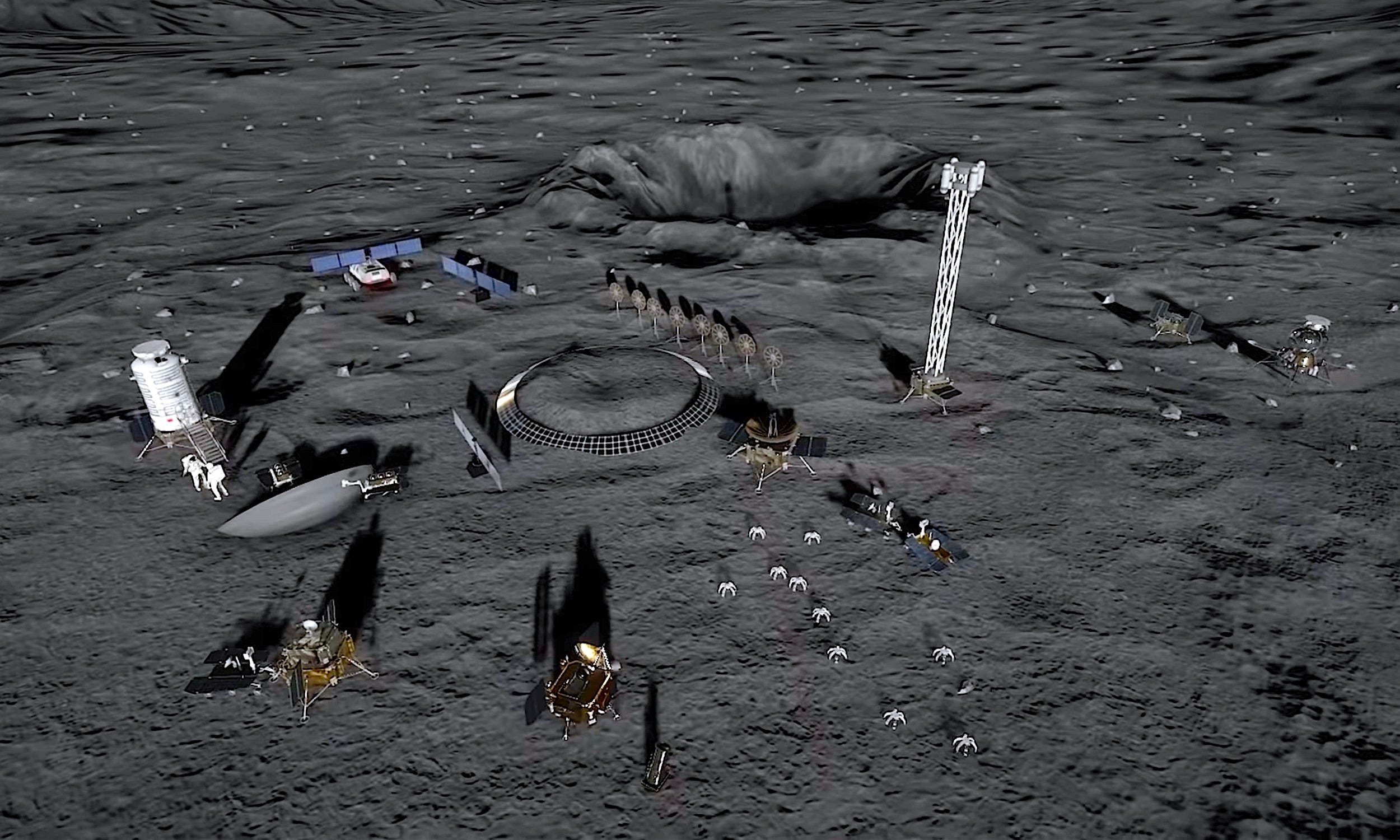Moon Monday #120: A lunarbound ispace craft, Chandrayaan 3 liftoff in sight, an Aussie lunar outpost, a Sino-Russian station, and more
I’m thrilled to share that my writing is now also published on Payload Space! Read my first story for them on Artemis science, which is also featured up top in their newsletter today:
I’ve had nice interactions with Ryan, Ari, and Rachael for a while now, and each of them have been kind readers of Moon Monday and my articles since 2021. I too have been reading Payload since I knew about it since around then. As such, this development feels particularly nice, and I’m excited to be working with the Payload team on more stories going ahead.
Mission updates

On March 21, ispace Japan’s Hakuto-R lunar lander successfully fired its engines to enter orbit around our Moon. This makes ispace the second private company to have hardware orbit Luna, following Israel-based SpaceIL’s said feat with the Beresheet lander in 2019. ispace will target an autonomous landing attempt of Hakuto-R in April end to the chosen landing site of 47.5°N, 44.4°E, which lies within the Atlas crater. However, the company hasn’t disclosed the parameters of the lander’s current roughly circular orbit, or how Hakuto-R will lower its perilune right until the descent begins for landing.
Eric Berger mentions that Astrobotic has completed testing the main engine of its first lunar lander part of NASA’s CLPS program, awaiting launch soon on a ULA Vulcan rocket. He adds that minor hiccups in preparing the brand new rocket is likely going to prevent ULA from flying Vulcan on the recently set 4-day launch window starting May 4. The next lunar launch window for Astrobotic comes in June.
At the 4th Indian Planetary Science Conference last week, ISRO Chief S. Somanath said that ISRO is targeting launch of the Chandrayaan 3 Moon landing mission by July. He added that the joint Indo-Japanese LUPEX mission will launch in the 2026–2028 timeframe. The mission’s ISRO-developed lander will deliver JAXA’s ~350-kilogram, drill-capable rover to the Moon’s south pole (between 89–90°S) to study water ice. LUPEX, similarly to NASA’s VIPER rover, aims to help scientists unravel the physical and chemical nature of the Moon’s water ice deposits, assess their resource potential, and determine how accessible they really are to help us plan future crewed missions.
NASA has assembled the core stage structure of the SLS rocket which will launch the Artemis II mission, which aims to send four astronauts around the Moon and back in late 2024. The core stage assembly includes joining of the engine section. The four RS-25 engines are up next for integration.
Australia blazing ahead on its lunar rover mission

On March 20, the Australian Space Agency announced that it has competitively selected two national industry consortia—AROSE, and the EPE & Lunar Outpost Oceania—to build a prototype of the country’s first lunar rover by June 2024. Each consortia will get $4 million in funding for the same. Post that point, the winning consortium will build the actual semi-autonomous rover for delivery to the Moon’s south pole on a NASA-funded CLPS lander in 2026. The rover will retrieve lunar soil for the lander, where a NASA-operated system will practice extracting oxygen from it as a technology precursor to eventually sustaining human presence on the Moon.
It’s worth noting that the consortia led by EPE involves Lunar Outpost Oceania, a wholly owned subsidiary of US-based company Lunar Outpost which is providing rovers on two upcoming CLPS Moon missions—one to the south pole and another to the swirl of Reiner Gamma. Lunar Outpost also has an office in Europe, over at Luxembourg. This office, funded by the Luxembourg government through an ESA Contract, focuses on developing thermal technologies to enable rovers to survive the frigid lunar nights.
Many thanks to Epsilon3 for sponsoring this week’s Moon Monday.
Thanks also to James Tuttle Keane for supporting my independent writing.
More on the Sino-Russian Moonbase

Zou Yongliao, head of the lunar and deep space exploration division at the Chinese Academy of Sciences, said that China and Russia have finalized key scientific goals of their joint International Lunar Research Station (ILRS), an envisioned long-term scientific base on the Moon’s south pole. These goals comprise the following:
- Learning about our Moon’s evolution & structure
- Conducting lunar-based astronomy for studying habitable exoplanets as well as cosmology
- Observing the Sun and Earth from the scientifically unique vantage point of our Moon
- Conducting lunar-based fundamental science & technology experiments such as plant growth
China wants ILRS to be operational starting 2028 with Chang’e 8 delivering cargo at the selected site to begin setting up basic infrastructure. It will also test technologies to extract and use local resources for future mission needs, including for when humans start visiting the base circa 2035.
Relatedly, Andrew Jones has previously reported how China is looking for international partners for exploring the Moon. To that end, the Chang’e 7 lander launching mid-decade was supposed to carry UAE’s second lunar rover. But now the partnership is apparently blocked by U.S. export control rules.
More Moon
Estonia wants to build an indigenous lunar rover, and several of its institutes have banded together to begin feasibility studies.
Trying to sustain a large, cooperative, and peaceful human presence on our Moon in the coming decade has policy implications right now. This is why The Moon Dialogs has released “The Lunar Policy Handbook” as a high-level guide for governments as well as private space entities. It particularly explores potential policy implications of specific lunar activities (being) planned by organizations worldwide.
Relatedly, NASA’s Office of Technology, Policy, and Strategy published a detailed report last year to prompt the agency and its international partners to plan for several policy and technical challenges that could stem from the increasing Moon landing missions by entities worldwide, especially those clustered at the relatively small but water-rich south pole.
